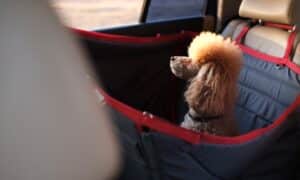Do you have a fat cat? Dog and cat obesity is the number one pet health problem that vets see today. Our pets are as susceptible to obesity as humans are. Of course, you love your cat and want the best for it. You make sure to treat it well and provide for its needs.
You may be treating your cat a little too well. If your cat is obese, it is at risk for diseases such as diabetes, Hepatic Lipidosis (fat seeping into the liver cells), and arthritis.
Just like humans, if a cat (or any other mammal for that matter) takes in more calories than its body can burn, the cat will gain weight. Forty percent of all cats in the United States today have a diagnosis of sedentary obesity and that percentage is growing.
In the wild, a cat expends a lot of energy to hunt down and catch its prey. Cat’s bodies are designed to store nutrients when hunting is slim. A domestic cat that lives indoors doesn’t have to hunt. Food is right there waiting for felines any time they want it – the perfect environment for a fat cat.
Many people refuse to see the fact that too much food is the cause of their fat cat and its weight problem. You may not be feeding your cat many treats, but you may be feeding them too much at one time, too often, or not enough meals in a day.
A cat that gets food once a day tends to gorge in case there won’t be a next meal. Veterinarians suggest that you serve your cat two to four meals a day – and think in ounces, not cups. 0.6 to 1.0 ounces per serving is plenty.
Cats were never made to digest carbohydrates. Humans and dogs have special enzymes in their saliva to break down carbohydrates in the mouth. Researchers have found that cats have considerably less of these enzymes than we do. Dry pet food can have high amounts of carbohydrates (usually in the form of flour or sugar).
Dry cat food diets are not always the best for your cat’s metabolism. The carbohydrates are immediately converted to fat and the result is a fat cat. Cats need a meat-based diet with high levels of protein. Research shows that diets high in fat and protein are best for carnivores such as cats – combined with plenty of exercise.
A lot of pet foods claim to be “perfectly balanced”. The only way your cat is going to get its true, proper diet is if it was living in the wild. Popular brands of canned food use many fillers, such as grain, to make the food more visually appealing to the owners.
Yes, that’s right; the food is produced to be appealing to you and not the cat. Grain is a replacement for real meat that your cat needs more than the carbohydrates grains provide.
Pre-packaged treats are another problem that create a fat cat. A treat once in a while is fine. However, owners make a habit of doling out treats far too much when they think the cat is restless or want to reward it for being cute. Never give your cat a treat to stop it from meowing, as this will only encourage your cat to vocalize more.
In effect, you’re telling your cat “Good kitty! Keep talking and I’ll give you another one of these treats!” If you must give your cat a treat, try giving it a small piece of cooked fish or chicken, something that is high in protein and better for the cat.
Of course, exercise is important to avoid a fat cat. If you can’t change what your cat eats, you can at least try to help your cat burn extra calories. Unfortunately, you can’t go for walks with your cat like you would a dog. Some cats might take to leash training, but it’s rare.
A typical domestic cat’s day consists of sleeping, eating, sleeping, and then waking up to sleep some more. If you have a fat cat, those habits will only increase as its weight slows it down. You need to provide your cat with toys and interesting things to do.
A cat needs to chase things, play hide and seek, stalk, and do something other than take naps in its favorite sunny window! If you can, get a second cat. The two cats will keep each other busy during the day while you’re away at work.
Before starting any diet plan for your fat cat, bring the cat to a veterinarian. Your vet will give your cat a thorough physical exam and discuss with you exactly what options you have at hand to help your cat lose weight.
Reprinted with permission: www.article-directorysite.com





